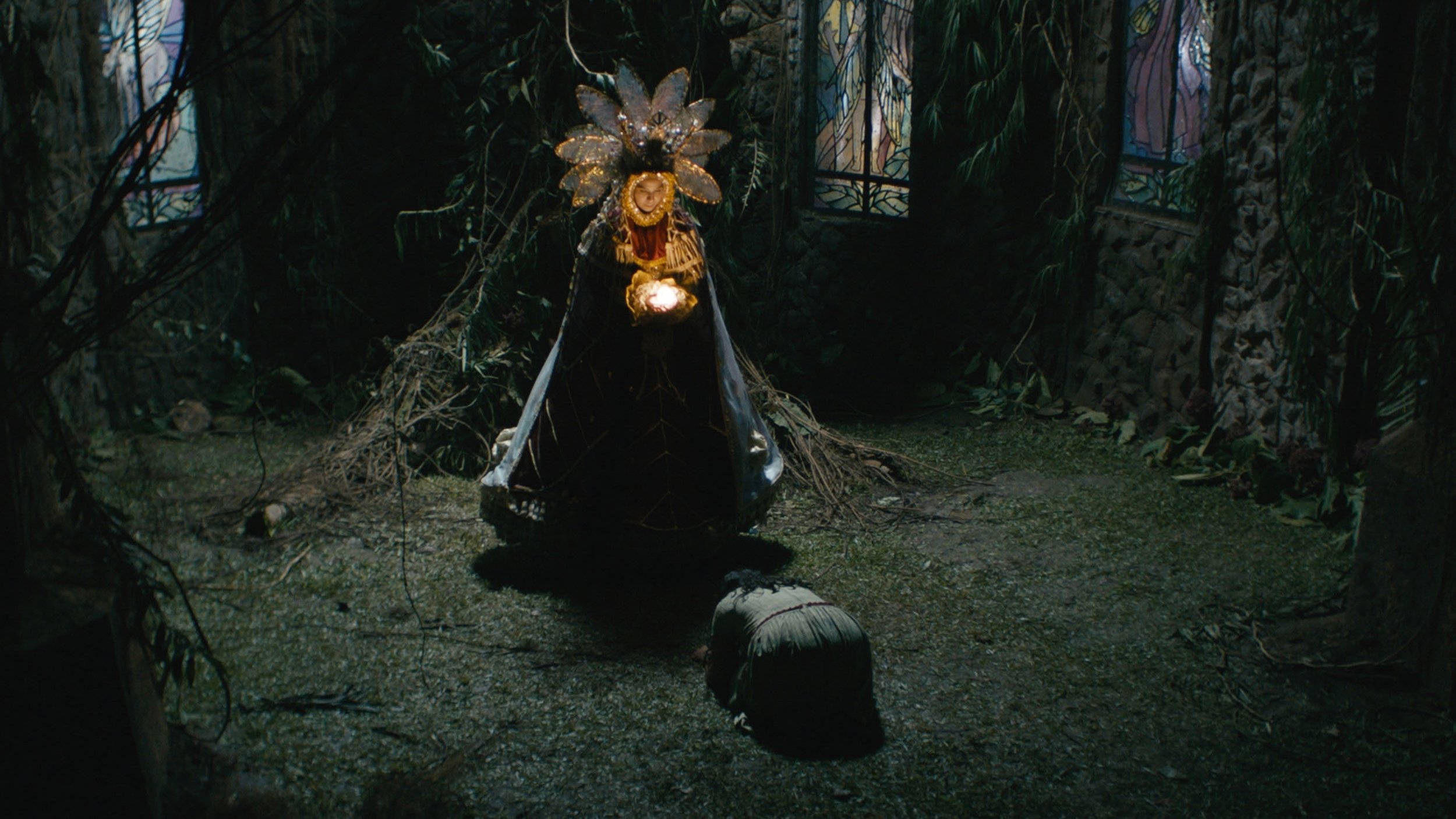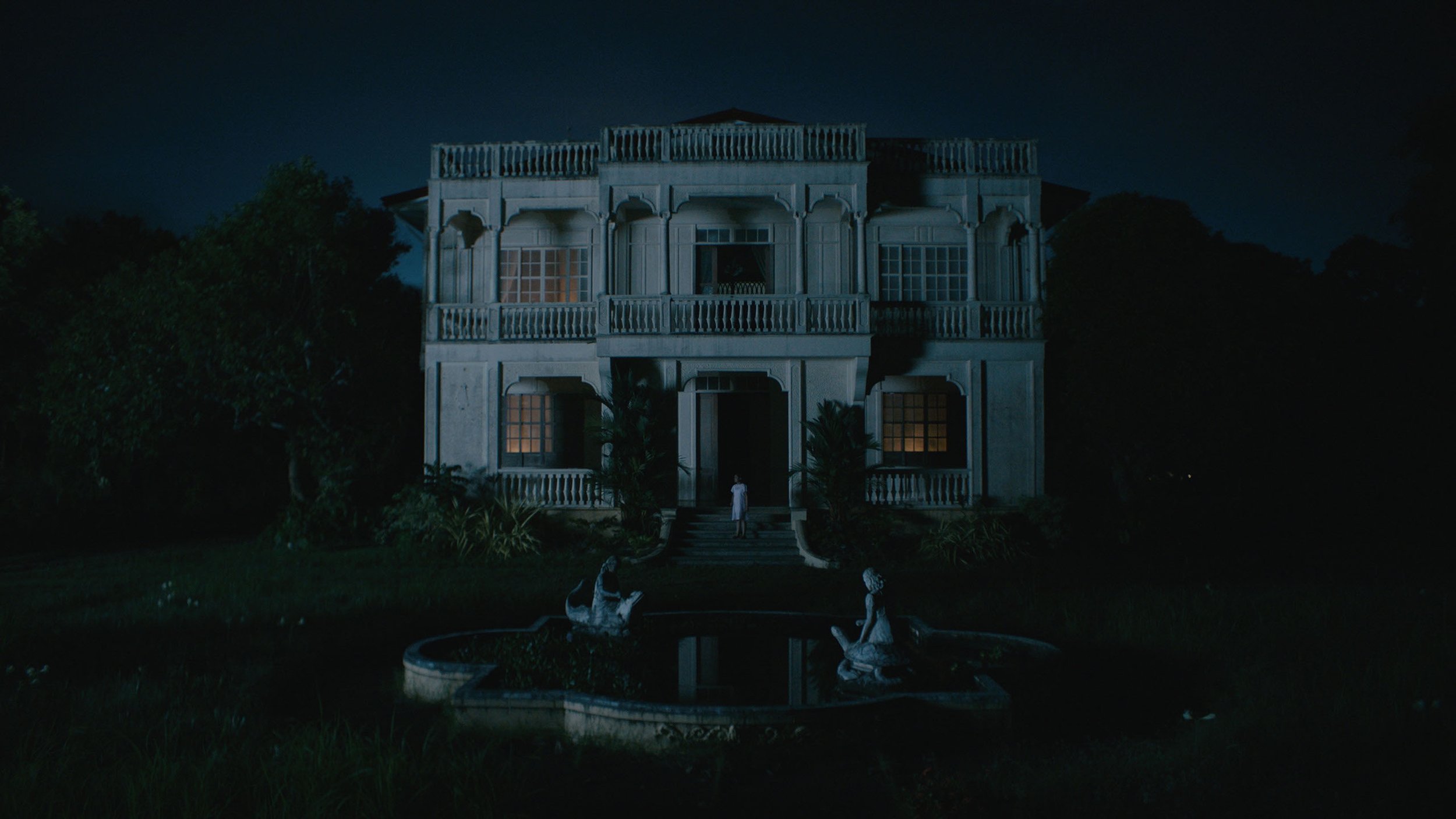[Sundance 2023 Review] 'In My Mother's Skin' Marries Body Horror with Flourishes of Guillermo del Toro's Earlier Work
It's easy to see the inspirations behind In My Mother’s Skin, particularly in the way it evokes Guillermo del Toro’s early works that married fantasy and horror to explore historical atrocities. Like in Pan’s Labyrinth, there’s a manor situated outside of town where the protagonists must deal with oppressive military might as well as something equally sinister hiding in the woods. Whereas Guillermo’s opus tackled the aftermath of the Spanish civil war, In My Mother’s Skin explores the Japanese occupation of the Philippines in the waning days of World War II. They both have fairies and mystical creatures. But In My Mother’s Skin embraces the body horror and the scare factor in ways that separate it from its more obvious inspirations.
It opens with violence, as soldiers in a hut are devoured by what looks like a twisted human with an enormously long tongue and the taste for human flesh. Eventually he spits out a black bird as the sounds of laughing and cackling swirl around him. It’s a visually arresting opening that quickly takes us to the manor where the visuals of a man eating his own soldiers turns into graphic stories whispered of the barbaric Japanese invading soldiers. Caught in the middle of this is Tala (Felicity Kyle Napuli), a young girl forced to become the parent of her family in the wake of mounting tragedies.
Her father is being investigated for stealing gold from the Japanese and the word on the street is that he’s hiding it somewhere in their dilapidated manor. He leaves the family to go help the Americans and soon after, her mother Ligaya (Beauty Gonzalez) falls ill, leaving Tala and her brother Bayani (James Mavie Estrella) to look after the estate with the dubious help of their remaining servant Amor (Angeli Bayani). Ligaya continues to tell her children that their father will be home soon, but Tala knows the food is dwindling and the crescendoing coughs from her mother sound like desperation. So she goes out into the woods surrounding their isolated estate and discovers a hut where a woman appears wearing a golden lamé and a headdress that gives her the appearance of cicadas mixed with the Virgin Mary.
Religious iconography and belief is an important visual metaphor here, as the young, devout Tala instantly believes this fairy woman will be able to help her mother and her family’s plight. Her deceptive smile matches the way in which she manipulates Tala, telling her that only those of “pure innocence” can find her home, that her father is still alive and he will be back. In the meantime, she’s here to help, she insists, and later that night appears in Tala’s room with an ornate container holding an insect. Ligaya’s illness is getting worse and the creature inside the jar can fix her…but the choice, the fairy says, is ultimately Tala’s.
What starts as an homage to Pan’s Labyrinth quickly descends into body horror madness as Tala is forced to deal with the ramifications of her decisions. In My Mother’s Skin is about desperate people who are left with nowhere to turn, except to something potentially more sinister. It’s a fable of kids forced to deal with mortality while being thrust into their parental roles. Written and directed by Kenneth Dagatan and shares a thematic link to his feature film Ma about a child who wants to resurrect his dead mother and will do anything to bring her back.
Shot mostly in one location and the surrounding woods, In My Mother’s Skin works because of the skittering sound design and the oppressive cinematography and production design. In one particularly suspenseful scene, cinematographer Russell Adam Morton suddenly transitions from a static camera to a swooping tracking shot that misses something skittering across Tala’s floor. It’s a stylish flourish that both builds tension and wouldn’t be out of place in a James Wan film. This, coupled with the sounds of cicadas and munching flesh, gives In My Mother’s Skin an fiendish and bleak atmosphere that carries the narrative to its chilling finale.


![[Sundance 2023 Review] 'In My Mother's Skin' Marries Body Horror with Flourishes of Guillermo del Toro's Earlier Work](https://images.squarespace-cdn.com/content/v1/5b39608d75f9eef54c62c3f0/1675959494043-64ZXW1DJPIJLJE93YL9Q/In+My+Mother%27s+Skin+-+Poster.jpeg)



![[Exclusive] What Did Robbie See? Exclusive Poster and Clip for Terrifying Found Footage Horror Film 'The Outwaters'!](https://images.squarespace-cdn.com/content/v1/5b39608d75f9eef54c62c3f0/1675301384686-PPRFAGTY7SUU69UC38XQ/C99A4EC1-59B6-4034-9193-678A2C6B8E63.jpeg)
![[Sundance 2023 Review] 'Aliens Abducted My Parents and Now I Feel Kinda Left Out' is a Goofy, Somewhat Heart Felt Kids Movie](https://images.squarespace-cdn.com/content/v1/5b39608d75f9eef54c62c3f0/1674938266371-VTLCPRWYPYI4MOQGLZUM/04cOchNA.jpeg)
![[Sundance 2023 Review] "My Animal" is a Queer Werewolf Coming of Age Story Missing its Bite](https://images.squarespace-cdn.com/content/v1/5b39608d75f9eef54c62c3f0/1674443675829-HPPGNJ54DIVBMDZ46IST/GXkpWu9Q.jpeg)
![[Sundance 2023 Review] 'Polite Society' is Effortlessly Charming Thanks to Priya Kansara](https://images.squarespace-cdn.com/content/v1/5b39608d75f9eef54c62c3f0/1675959552797-FK6ZAEV2R40ARTM7I81Q/2GQLk3XU.jpeg)
![[Sundance 2023 Review] 'Talk to Me' is a Wild and Vicious Rollercoaster Almost Derailed by its Script](https://images.squarespace-cdn.com/content/v1/5b39608d75f9eef54c62c3f0/1675962512977-FKVJWDWPKHTY3WG54W85/JYz-YYvw.jpeg)